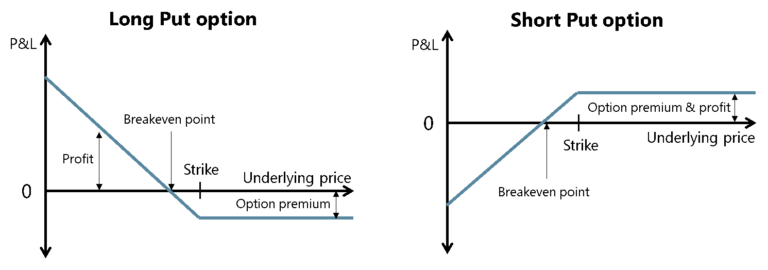Put options

What do long/short positions in put options mean?
In the simplest terms, there are four positions an investor can take in options:
- Buy call options (long)
- Sell/write call options (short)
- Buy put options (long)
- Sell/write put options (short)
Here, we’ll consider put options. An investor that buys put options benefits from this position when the price of the underlying asset is lower than the strike price of the option at expiry. The profit potential is generally capped, as most assets cannot have a value of less than 0 (though this is not always true). Conversely, if at expiry the price of the underlying asset is higher than the strike price, the option expires with no intrinsic value and the investor’s loss is equal to the option premium paid. The pay-off potential of the short put option position is the opposite of the buyer of the put option.
Examples
- Long put option: an investor buys a put option on a share at a premium of €1.50, a strike price of €40 and the multiplier is 100. If at expiry the share price is above €40, then the option will expire with no intrinsic value and the investor’s loss will be equal to the €150 premium paid. However, if the price is below €40, then the option position earns a profit when the price moves beyond the break-even point at €40 – €1.50 = €38.50.
- Short put option: on the other side of the trade is the investor that has written the put option. If at expiry the share price is above €40, then the writer will earn a profit equal to the €150 premium received from the option buyer. However, if the price drops below the strike price, the writer of the call option will incur a loss when the share price crosses €38.50.
Schematically, the pay-off of a long and short put position looks like this:






